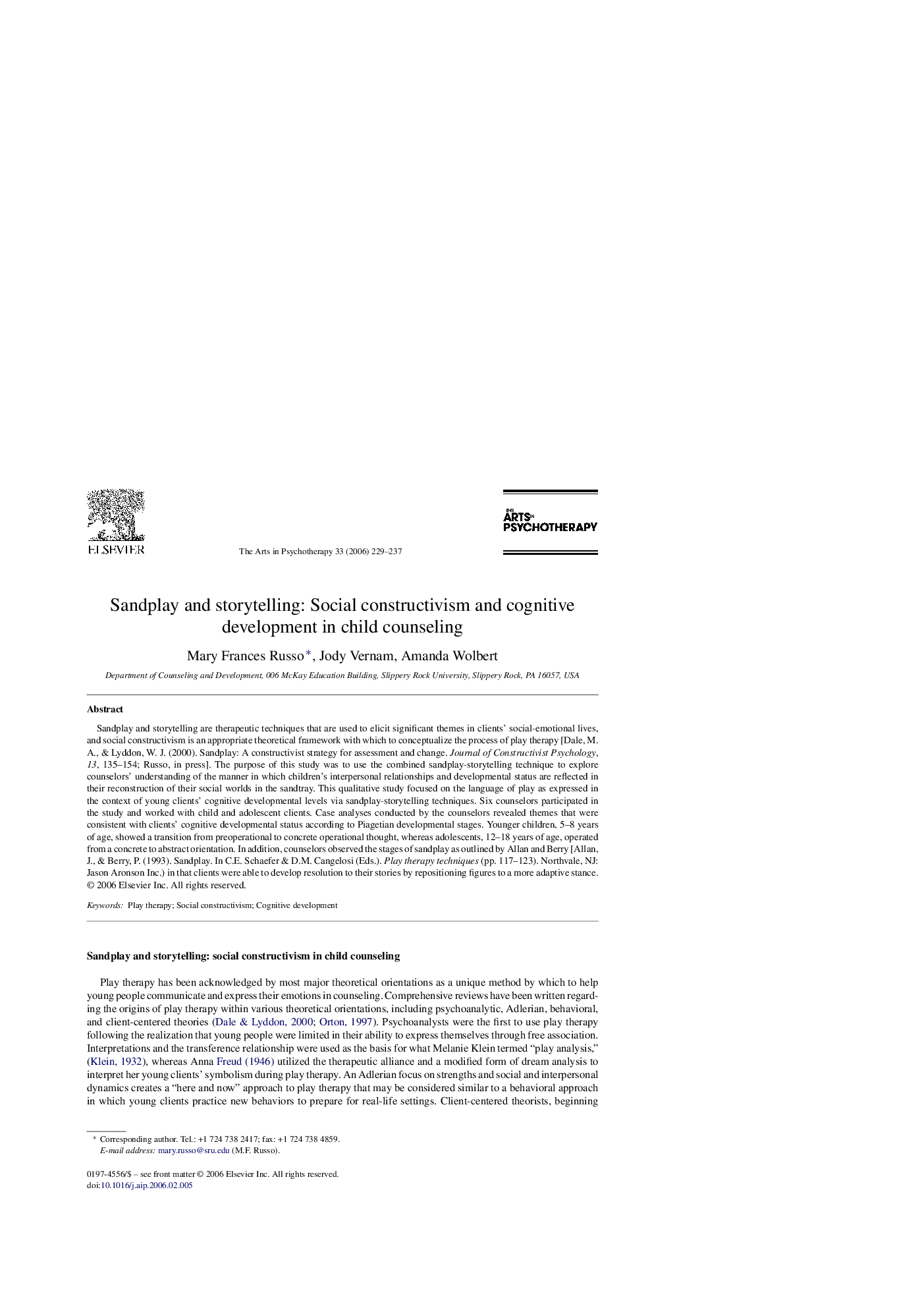| Article ID | Journal | Published Year | Pages | File Type |
|---|---|---|---|---|
| 343965 | The Arts in Psychotherapy | 2006 | 9 Pages |
Sandplay and storytelling are therapeutic techniques that are used to elicit significant themes in clients’ social-emotional lives, and social constructivism is an appropriate theoretical framework with which to conceptualize the process of play therapy [Dale, M. A., & Lyddon, W. J. (2000). Sandplay: A constructivist strategy for assessment and change. Journal of Constructivist Psychology, 13, 135–154; Russo, in press]. The purpose of this study was to use the combined sandplay-storytelling technique to explore counselors’ understanding of the manner in which children's interpersonal relationships and developmental status are reflected in their reconstruction of their social worlds in the sandtray. This qualitative study focused on the language of play as expressed in the context of young clients’ cognitive developmental levels via sandplay-storytelling techniques. Six counselors participated in the study and worked with child and adolescent clients. Case analyses conducted by the counselors revealed themes that were consistent with clients’ cognitive developmental status according to Piagetian developmental stages. Younger children, 5–8 years of age, showed a transition from preoperational to concrete operational thought, whereas adolescents, 12–18 years of age, operated from a concrete to abstract orientation. In addition, counselors observed the stages of sandplay as outlined by Allan and Berry [Allan, J., & Berry, P. (1993). Sandplay. In C.E. Schaefer & D.M. Cangelosi (Eds.). Play therapy techniques (pp. 117–123). Northvale, NJ: Jason Aronson Inc.) in that clients were able to develop resolution to their stories by repositioning figures to a more adaptive stance.
